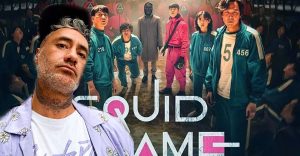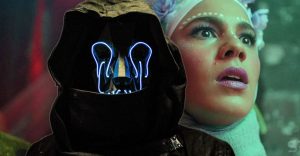5 Reasons Why The Legend Of Tarzan Isn’t As Bad As People Say It Is (& 5 Reasons It Is)

2016’s The Legend of Tarzan, while not without its fans or some success at the box office, is mostly remembered as a costly critical misfire that failed to connect with general audiences in the way that producers would have hoped. Does this mean that there’s nothing worth appreciating in it though?
By examing the movie’s best and worst qualities and weighing them against one another, let’s see whether The Legend of Tarzan really is as bad as its reputation suggests that it is or if there’s something more in the movie that’s being overlooked.
10 Is: White Savior Complex

Tarzan is an undeniably awkward character to try and bring back to the big screen in live-action in the modern-day, for so many reasons, that most just wouldn’t see the point.
The main issue is one that the movie barrels headfirst into and that’s the white savior complex showing itself quite clearly in the story of Tarzan returning to Africa to quite literally free slaves.
9 Isn’t: Acknowledging Colonialism

It has to be noted, however, that The Legend of Tarzan not only acknowledges the history of colonialism in Africa but weaves it into the heart of its story right from the opening.
The movie accepts the responsibility of its period setting and makes its story about colonialism rather than just treating it, like most movies do, as an inconvenient side note to the adventure.
8 Is: An Overly-Romanticized Depiction of Natives

The Legend of Tarzan‘s postcolonial awareness is somewhat undone by its depiction of African culture, with its representation of natives often coming off as, at best, overly-simplistic and, at worst, reductive.
Native tribes of the Congo are shown on screen as either perfectly angelic or supernaturally mysterious in a way that makes them seem totally detached from the reality of the rest of the world shown in the movie.
7 Isn’t: A Unique Atmosphere

Far less concerned with keeping the audience visually arrested throughout the movie, The Legend of Tarzan is a pacy adventure story that often takes the time to be pensive or even mournful and melancholic in its own way.
The look of the movie often alternates between backdrops of vivid primary colors and hazier bluey greys to paint a rich picture and evoke a lot of atmosphere in a relatively short amount of time.
6 Is: A Disjointed Story

The major drawback of the movie’s brisk pacing is that it has to cover a lot of narrative ground in a short space of time, which leaves a number of major plot points being delivered out of sequence.
The movie often handles this quite well and allows this quality to further illustrate the running theme of history informing the present and the future, but it all too often comes across as too much story for one movie and can make the whole thing seem overstuffed.
5 Isn’t: It Doesn’t Waste Christoph Waltz

One of the most well-respected actors working in modern Hollywood as well as one of its most frequently miscast, Christoph Waltz often comes off as a talent too great for Hollywood to know what to do with.
Given the role of real-life figure Léon Rom, however, Waltz sinks into his character in a way usually only seen in Tarantino’s movies starring the actor.
4 Is: Already Dated Computer Effects

Though bursting with the best motion capture technology that major studio money can buy, and a number of timeless practical effects, the computer-generated effects were barely passable in the worst instances and quickly dated in the best.
Considering how important the image of Tarzan swinging through the trees is to the movie, it’s disappointingly realized in the end product, and a number of the animal effects end up looking much more cartoonish than photorealistic.
3 Isn’t: Samuel L. Jackson’s Character is Just as Important as Tarzan

Samuel L. Jackson plays another real-life figure in the movie, George Washington Williams, and highlights his prominence in the time period as well as his importance in highlighting the plot’s key concerns in history.
Jackson is as charismatic as ever in the role and gets to show a wider range of emotion–and have a much bigger presence in, and impact on, the story–throughout the movie than any appearance in the MCU to date.
2 Is: An Ultimately Antiquated Heroine

As hard as the movie tries to make Margot Robbie’s Jane a more modern and self-assured heroine, she is ultimately the damsel archetype that she scoffs at and is not much more than an objective within the plot.
All of the character’s protestations and attempts at escape are ultimately for nothing as she’s a passenger in the course of events and nothing more throughout the story.
1 Isn’t: A Complete Adventure

Unlike so many examples of what could be called franchise movies, The Legend of Tarzan offers not only a unique perspective on its iconic main character but also a complete narrative journey.
Tarzan not only comes full circle in his emotional conflicts set up throughout the movie but develops as a protagonist into something more than their standard image.
About The Author

















